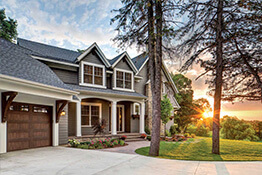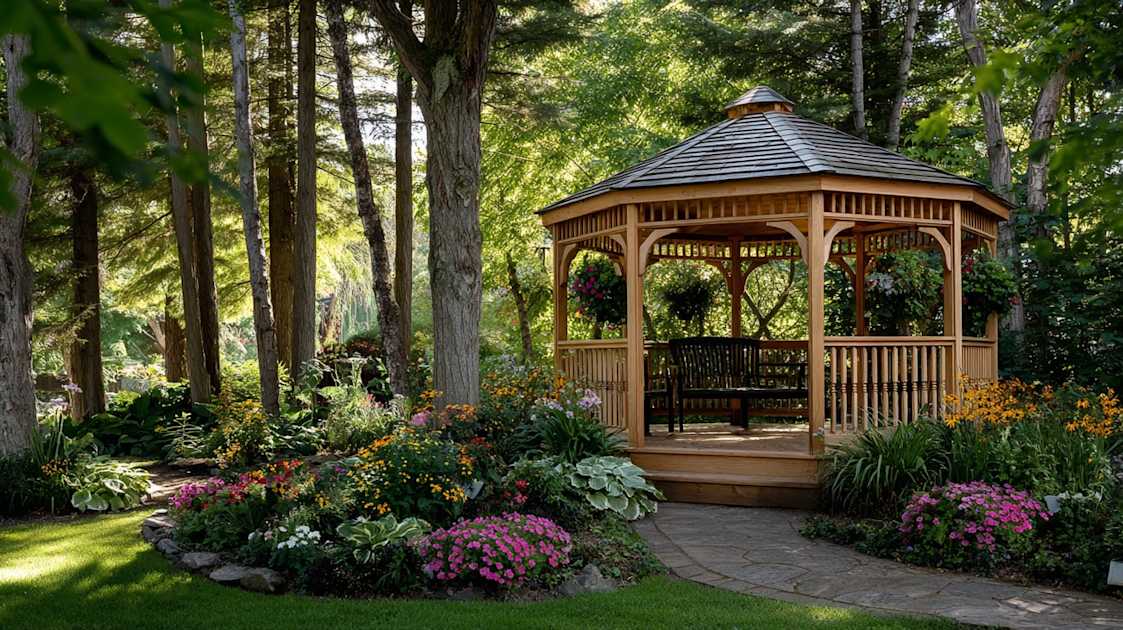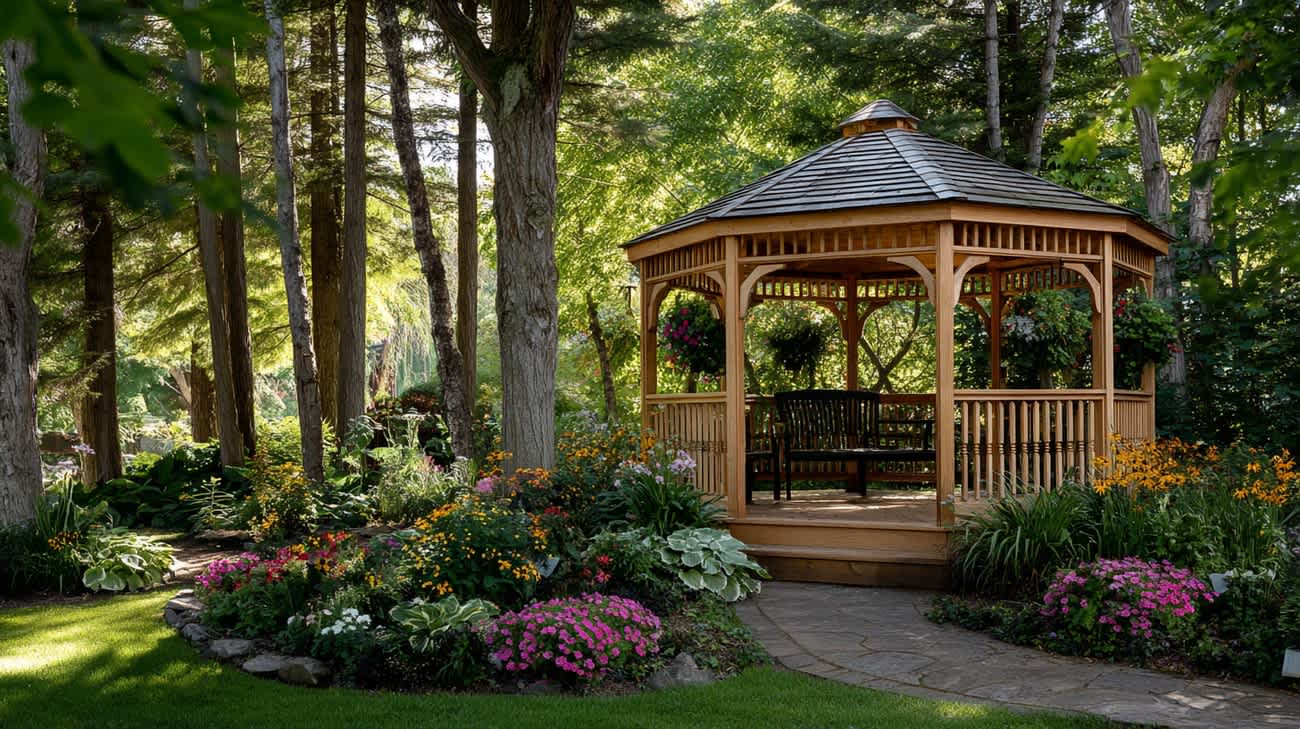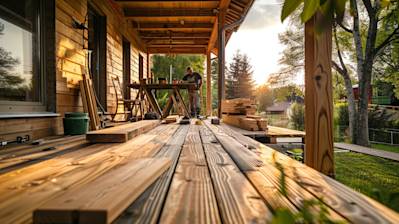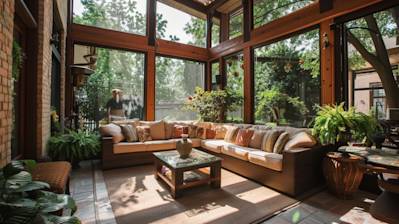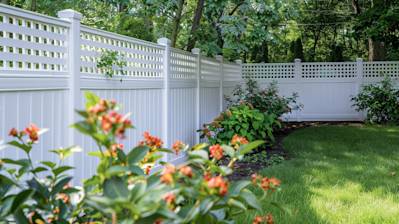Wood gazebos are more than just a shelter in your backyard; they are an enchanting addition that can transform your outdoor space into a tranquil haven. Whether you’re considering a focal point for your garden, a serene spot for relaxation, or a venue for festive gatherings, wood gazebos offer unmatched beauty and functional benefits. Let's delve into the world of wood gazebos and explore everything you need to know about these magnificent structures.
Why Choose Wood Gazebos?
Wood gazebos exude natural appeal and blend seamlessly into any garden landscape. They hold an edge over other materials due to their versatility, customizability, and eco-friendly properties.
Natural Beauty and Aesthetic Appeal
The rich textures and hues of wood create a pleasing aesthetic that enhances the natural beauty of your surroundings. Whether you prefer the classic elegance of pine or the rugged charm of cedar, there is a wood type to match your garden's aesthetic.
Customization and Craftsmanship
Wood allows for intricate designs and bespoke features. You have the flexibility to choose from an array of designs, shapes, and sizes, ensuring that your gazebo perfectly complements your outdoor space. Skilled craftsmen can incorporate detailed carvings, artistic railings, and creative roofing styles.
Durability and Longevity
With proper maintenance, wood gazebos can withstand the test of time. Various treatments and finishes can protect them from harsh weather conditions and insect damage, making them a worthwhile investment.
Types of Wood for Gazebos
Selecting the right wood type is crucial for the longevity and appearance of your gazebo. Here are some popular choices:
Cedar: Known for its natural resistance to insects and decay, cedar is an ideal choice for outdoor structures. Its natural oil acts as a preservative, enhancing its durability.
Redwood: This is a premium wood option known for its high performance and stunning red hue. Redwood is resistant to shrinking and warping, maintaining its beauty over time.
Pine: Treated pine is an economical choice that offers excellent protection against decay and pests. Its adaptability allows for painting or staining in various finishes.
These choices ensure that you have a durable and visually appealing structure that complements your landscape.
Design Ideas for Wood Gazebos
From a quaint corner retreat to an elaborate garden pavilion, the design possibilities for wood gazebos are endless.
Traditional and Classic Designs
Traditional designs often feature octagonal shapes and gabled roofs, providing a classic appeal that suits both small gardens and expansive properties. These designs often include intricate woodworking and latticework, adding to their charm.
Modern and Minimalist Styles
For those who prefer sleek lines and minimal embellishments, a modern gazebo design might be the right choice. Square or rectangular forms with flat or slightly sloped roofs can blend beautifully into contemporary landscapes.
Rustic Retreats
If you love the idea of a countryside escape, a rustic wood gazebo can offer that cottage-inspired charm. These designs often showcase natural wood finishes and may include features like a stone floor or a wood-burning fire pit.
How to Maintain Your Wood Gazebo
Proper maintenance ensures that your wood gazebo remains a beloved feature of your garden for years to come.
Regular Cleaning: Sweep away leaves and debris to prevent any build-up that can cause damage.
Staining and Sealing: Apply stain or sealer annually to protect the wood from moisture and UV rays. This not only preserves the wood but also enhances its natural beauty.
Inspect for Damage: Regularly check for termites or signs of decay, addressing issues promptly to prevent further damage.
A little routine care can go a long way in keeping your gazebo in excellent condition.
Enhancing Your Gazebo Experience
Wood gazebos provide an exceptional opportunity to create a personalized outdoor experience. Consider these enhancements to elevate your gazebo's appeal:
Lighting: Install soft, ambient lighting or string lights for evening gatherings, adding warmth and enchantment.
Seating and Decor: Cozy up the space with comfortable seating, outdoor rugs, and cushions. A few planters or hanging baskets can add a touch of greenery inside and out.
Outdoor Curtains or Blinds: Adding curtains can give your gazebo a luxurious feel while offering privacy and protection from the elements.
By incorporating these features, your gazebo will become an inviting sanctuary that others are drawn to.
Buying Considerations
When purchasing a wood gazebo, it’s important to consider factors that will affect its functionality and your satisfaction.
Space and Location: Measure your available outdoor space to ensure the gazebo fits comfortably without overwhelming your garden.
Climate Considerations: Choose wood types and treatments suitable for your local climate conditions to enhance longevity.
Budget: Set a realistic budget that allows for quality materials and the desired level of customization.
Taking these factors into account will help you make an informed decision that aligns with your vision and needs.
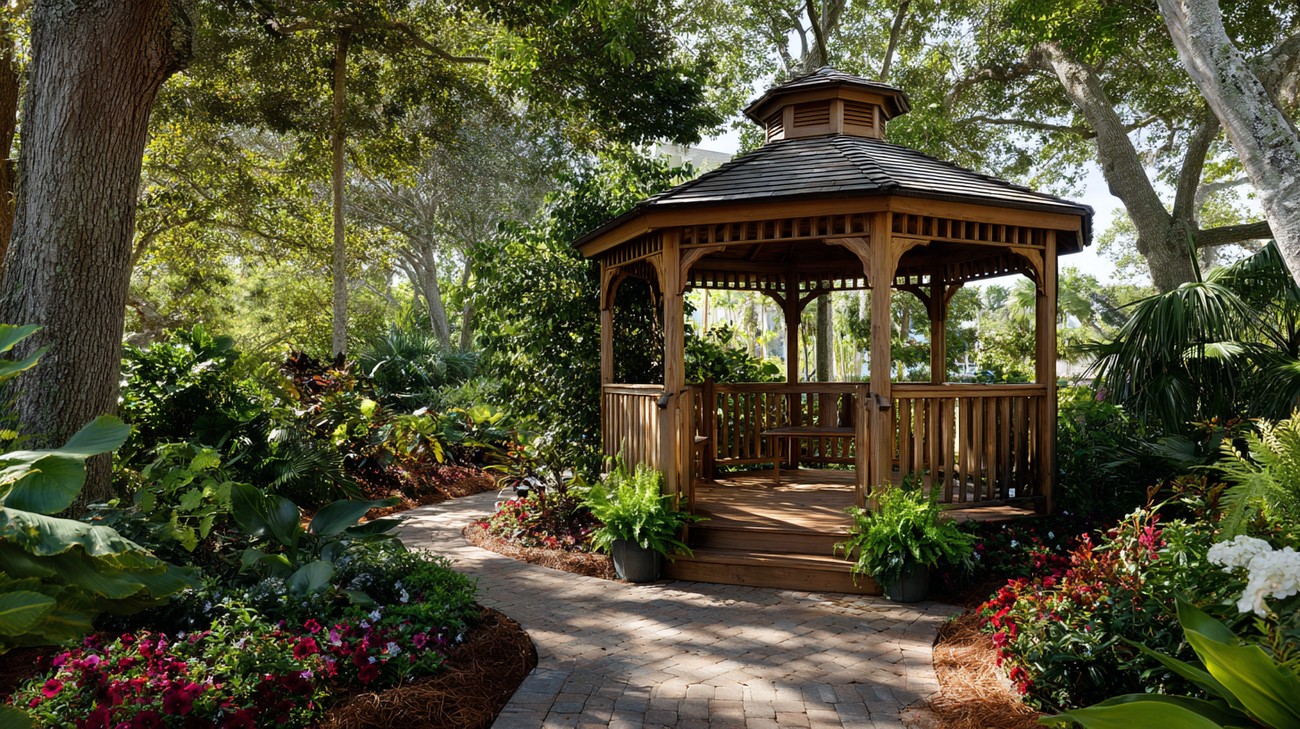
Frequently Asked Questions
How durable are wood gazebos?
Wood gazebos are highly durable when constructed with quality materials and given proper maintenance. Types of wood like cedar, redwood, and pressure-treated lumber are naturally resistant to rot, decay, and insect damage, ensuring longevity. Regular upkeep such as staining, sealing, and timely repairs can significantly extend a wood gazebo's lifespan, allowing it to withstand various weather conditions for decades.
What types of wood are typically used for building gazebos?
Common types of wood used in the construction of gazebos include cedar, redwood, pine, and pressure-treated lumber. Cedar and redwood are favored for their natural resistance to insects and decay and their ability to hold up in diverse climates. They also have attractive grains and colors that enhance the gazebo's aesthetic appeal. Pressure-treated lumber is often chosen for its affordability and enhanced durability due to chemical treatments that protect it from pests and rot.
How do wood gazebos compare to metal gazebos in terms of maintenance?
Wood gazebos require more maintenance than metal gazebos. To keep them in top condition, wooden structures need regular staining or painting to protect against moisture and sun damage. This maintenance prevents cracking, peeling, and warping. Metal gazebos, often made from aluminum or steel, may only require occasional cleaning and rust treatment. However, many people find the warmth and character of wood worth the additional care.
Are wood gazebos weather-resistant?
Wood gazebos are fairly weather-resistant, especially when made with rot-resistant woods like cedar and treated regularly. To maximize weather resistance, apply a quality sealant that shields the wood from moisture and UV rays. Adequate drainage and ventilation are crucial in preventing water damage and mold. Keeping foliage away from the structure and using a roof that sheds rain efficiently will also enhance its ability to withstand severe weather conditions.
Can I customize my wood gazebo?
Absolutely! Wood gazebos offer high customization potential. You can personalize dimensions, design details, and features such as more doors or windows to match your exact preferences. Finishing options—like paint colors and stains—allow you to complement the gazebo with the rest of your outdoor space. Additional features like built-in seating, lighting, or even a weatherproof roof can further tailor the structure to your needs.
How much do wood gazebos typically cost?
The cost of wood gazebos can vary widely, depending on factors such as size, complexity of design, type of wood, and additional features. Small, basic models might start at $1,500, while larger, more elaborate structures could reach $10,000 or more. Premium woods like cedar or custom design features can increase the price but often enhance the gazebo's aesthetics and longevity. Installation costs should also be considered unless you plan on a DIY build.
Can I install a wood gazebo myself?
Installing a wood gazebo can be a DIY project if you have the necessary skills, tools, and time. Many kits are available with pre-cut pieces and instructions for assembly. However, since a gazebo is a substantial structure, it's crucial to ensure a solid foundation and precise construction to avoid issues. If you're uncertain about handling the build yourself, hiring professionals can ensure safe and accurate installation.
How can I protect my wood gazebo from termites?
Protecting your wood gazebo from termites involves using pressure-treated lumber, which is resistant to insect attacks. Applying a borate-based wood preservative can add a layer of protection. Regular inspections to catch early signs of termite activity and maintaining a clean surrounding area—free of leaf litter and wood debris—can prevent infestations. Also, avoid direct wood-soil contact and maintain a gap between the gazebo structure and any nearby plants or trees.

Is a Wood Gazebo Right for You?
Pros
Natural Beauty and Aesthetic Appeal
Wood gazebos naturally ooze charm and elegance. They harmonize well with outdoor settings, drawing the eye with their rustic allure. If you enjoy the look of natural materials blending into your garden or backyard, a wood gazebo can be a delightful choice. The grain patterns and potential for stained finishes add to their unique appeal, which can significantly enhance your property's visual appeal.
Versatility in Design
When it comes to customization, wood gazebos offer fantastic flexibility. You can choose from a variety of woods, finishes, and designs to match your style. It’s feasible to alter their size, shape, or even add intricate carvings or paint, making them a dream for those who love personalized touches. Whether you prefer a quaint Victorian style or a sleek, modern design, wood allows for nearly endless creative expression.
Durability with Proper Maintenance
Though wood requires regular maintenance, this can actually extend its life and durability. By applying proper treatments like stains and sealants, your wood gazebo can withstand the elements for years. When well-maintained, wood structures can support heavy snow loads or stand strong against harsh sunlight, making them a reliable option across many climates.
Eco-Friendly Options
Choosing sustainably sourced wood can make your gazebo an eco-friendly addition to your home. Many manufacturers offer wood that comes from certified, responsibly managed forests, so you can enjoy your outdoor structure while also feeling good about your environmental impact.
Ease of Repair
One of the great things about wood is that it's straightforward to repair. If a part of your gazebo becomes damaged, you can replace or fix the affected section without much hassle. Unlike metal or plastic structures, you don't usually need to replace larger portions if one piece becomes flawed.
Cons
Regular Maintenance Required
You’ll need to roll up your sleeves regularly if you opt for a wood gazebo, as they demand consistent upkeep. To fend off rot, pests, and weather damage, these structures often require annual staining, sealing, or painting. Neglecting maintenance can lead to quick deterioration, which some might find to be a chore or a time-consuming process.
Vulnerability to Weather and Pests
Wood is a natural material, which makes it susceptible to whatever Mother Nature throws its way. From termites to heavy rain, wood gazebos can face challenges. Exposure to the elements without the right protective measures can lead to rot or infestations, a concern not as prevalent with other materials like metal or plastic.
Initial Cost
The beauty and customizability of wood gazebos often come at a higher initial price compared to other materials. The investment might deter some potential gazebo owners, especially if budget constraints are a significant consideration. Even though they can add value to your home, the upfront cost might be a hurdle.
Potential for Warping or Splitting
Despite its many benefits, wood is prone to warping or splitting over time. Changes in temperature and humidity can affect its form, sometimes leading to structural concerns. You might have to keep an eye out for these issues, addressing them promptly to maintain your gazebo's integrity.
Not the Best for All Climates
If you live in an area with extreme weather conditions, a wood gazebo might not be your best bet. While they can be treated to withstand different climates, extremely arid or damp environments can take a toll. This might necessitate more frequent maintenance or ultimately diminish the gazebo’s lifespan.
In summary, deciding whether a wood gazebo is right for you depends on several factors, including your tolerance for maintenance and your local climate. With their undeniable charm and versatility, wood gazebos offer rewarding benefits but do require a commitment to upkeep and care to ensure long-lasting enjoyment.

Summary
Wood gazebos are a fantastic addition to any backyard space, offering a perfect blend of style and function. They provide a cozy and shaded spot for relaxation, entertaining, or simply enjoying the beauty of the outdoors. Whether you want a peaceful retreat or a space to host gatherings, these structures are versatile and customizable to fit your needs and aesthetic. Plus, with their natural look, they seamlessly blend with garden landscapes, creating an inviting and picturesque environment. So, if you're considering a backyard upgrade, wood gazebos might just be the charming centerpiece you're looking for.
Tags: outdoor, garden, backyard,
